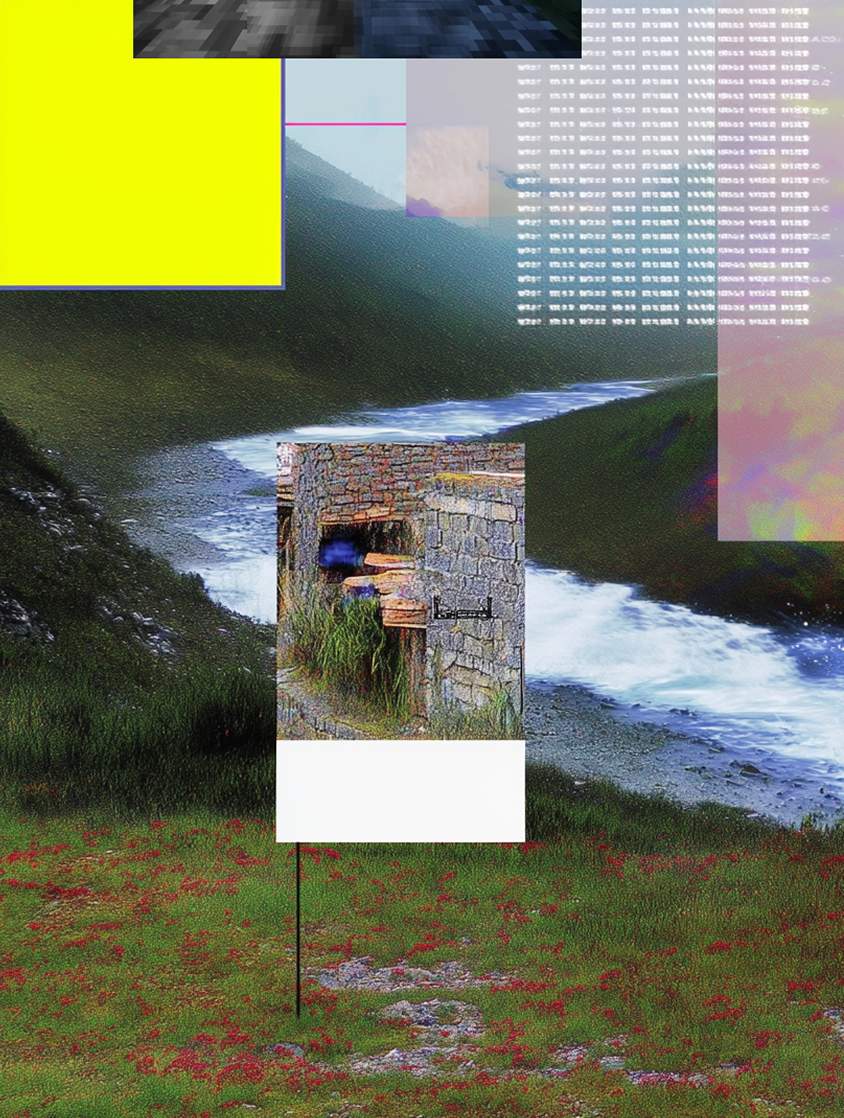
Technology frees us. It can also flatten us.
AI can flatten brands into sameness—or help them come alive. The difference lies in how we build: for optimization, or for emotion, creativity, and co-creation.
Creativity is a central part of the human experience, more now than ever. Technology has given us all the tools to create, remix and shape culture. Being creative is no longer extracurricular, it’s part of our daily lives.
But while many technologies have helped democratize creation, others are working against it. Algorithms serve us what they think we want to see and hear. They try to get us to consume rather than create. And many brands are using these technologies heavily, missing out on the benefits of tapping into their customers' humanity and creativity.
The result is distraction and deadening at a time when people are more ready than ever to care, to participate, to feel something.
We’re at a fork in the road with AI: it can help brands come alive, or flatten them into sameness. It can deepen creative expression, or optimize it into oblivion. The choice is in how we build.


Enshittification vs. "Minecraftification"
In the quest for marketing efficiency brands have become overly predictive and optimized, leading to a loss of emotional connection and creative inspiration. This is part of a broader cultural trend—what Cory Doctorow popularized as “enshittification”—where platforms, products, and even brands degrade over time by squeezing value from users rather than creating it with them.
As brands go, few are more publicly ensnared in this trend than Spotify. What was once a portal to music discovery now too often feels like an echo chamber. Artists are frustrated. Users are bored. The playlists repeat. The predictions miss. It’s algorithmic sameness disguised as personalization. People feel this deeply, and this once-beloved brand has lost its luster for many.
The counter-trend to this is what I'll call "Minecraftification." Minecraft has become a ubiquitous and beloved brand over the last two decades. It's been built almost entirely on the creativity of its users, but is also somehow deeply consistent, recognizable and well-architected. The Minecraft visual style and tonality are iconic, but every experience is a little different. Because it’s shaped by people outside the brand it can stretch across many moments, many emotions (even negative ones) and many different cultural contexts.
This is the Minecraft model:
Player-shaped: Each user co-creates the experience
Emotionally varied: The game holds joy, chaos, boredom, awe
Culturally expansive: It flexes across ages, geographies, subcultures
Brands can learn a lot from how Minecraft operates. They suffer when they undervalue emotion and novelty. The systems many brands are built on don’t reward surprise, they reward stickiness. And the more predictable the experience, the less connected people feel to it.
Surprise, personal resonance, and meaning don’t come from top-down control. They come from systems that invite participation. This is difficult to achieve when brand management is treated as "governance" and driven by static guidelines, but emerging AI tech has the potential to help every brand operate in a better way.
From Effectiveness to Affectiveness
It might sound strange to say that AI could make brands feel more human. But that’s exactly what’s starting to happen. In the past, brands needed to be boiled down to their simplest essence. Not because it was the best thing to do, but because it was the easiest thing to manage. A small brand team needed a simple playbook to make big decisions, and automated systems that delivered the right message to the right person at the right time. Effectiveness and efficiency were the goal, something that could deliver results with the least amount of human effort.
But in today’s cultural climate, effectiveness isn’t enough. People don’t just want relevance—they want resonance. They want to feel something, and they want to make something. And that means brands have to shift from being merely effective to being affective—creating real emotion and attraction.
This is where AI has surprising power because it can help brands express themselves in more ways, in more places, with more emotional intelligence. An AI-powered brand isn’t just fluent in brand guidelines. It’s fluent in context: cultural norms, human needs, creative impulses, changing sentiment, emerging language. It can help a brand show up with nuance, even at scale—and invite people in more easily.
The result is a brand that behaves less like a broadcast and more like a living system—able to listen, adapt, and connect in intimate, unexpected, and emotionally meaningful ways.


New Tools, New Rules
AI-powered brand systems can help marketers do things traditional models weren’t built for:
Design for good friction.
Surprise, contrast, and even small moments of confusion are where emotion lives. That’s the good kind of friction—the kind that makes something stick. AI can help us design for tension and texture, not just smoothness.
Amplify creativity—yours and theirs.
AI isn’t just a productivity tool. It’s a creative multiplier. It can help brands explore new ideas, remix cultural signals, and push the boundaries of expression. And it can learn from the ways people engage, play, and contribute, incorporating consumer creativity into the evolution of the brand.
Create choice instead of trying to predict it.
Prediction keeps us stuck in the loop. Discovery breaks us out of it. AI can help brands show up in moments of curiosity and identity-building, where emotional connection happens—and where people choose to bring a brand into their lives.
A New Ideal For Brands
The brands that will matter most in the years ahead won’t be the ones that speak the loudest or optimize the fastest. They’ll be the ones that feel the most alive.
This means building systems not just for reach, but for resonance. Not just for attention, but for emotion. Not just for consumers, but for co-creators. Because the choice is here: Do we keep flattening—smoothing every edge until nothing sticks? Or do we build brands that invite people in, make room for feeling, and leave space for surprise?
AI can go either way. It’s up to us to make it weird, meaningful, and human.
Contributors
Zeus Jones helps brands live in the future.